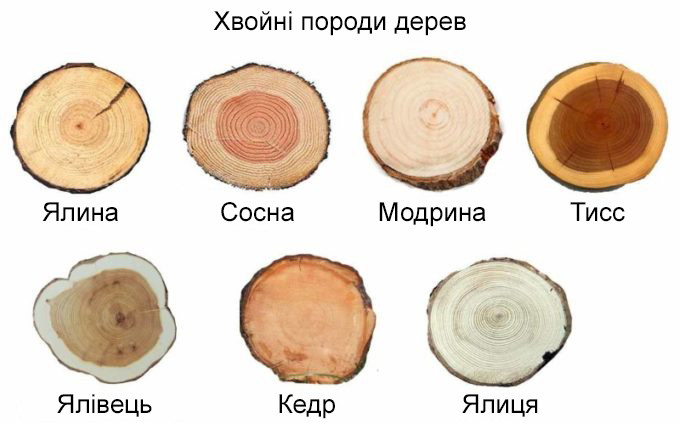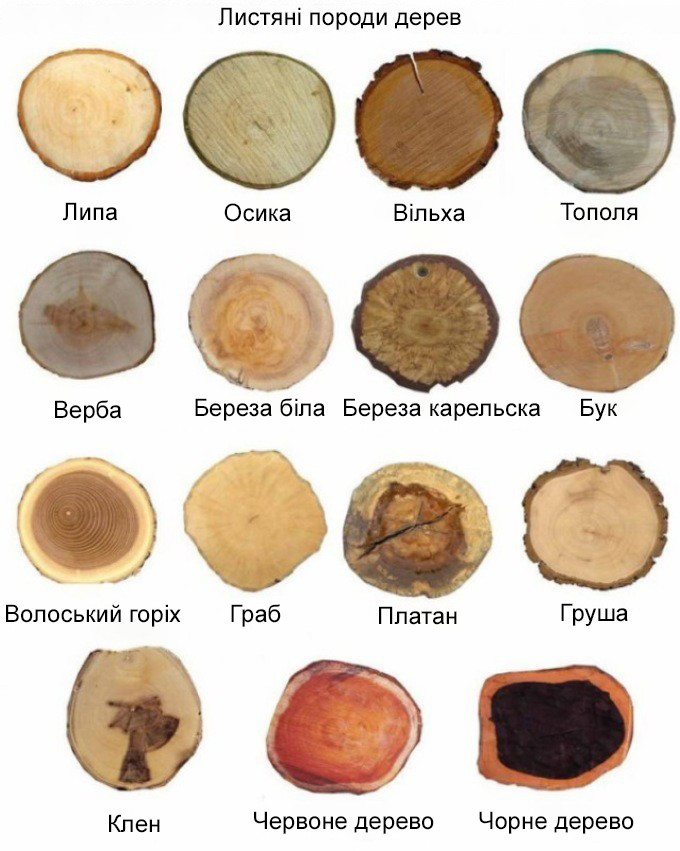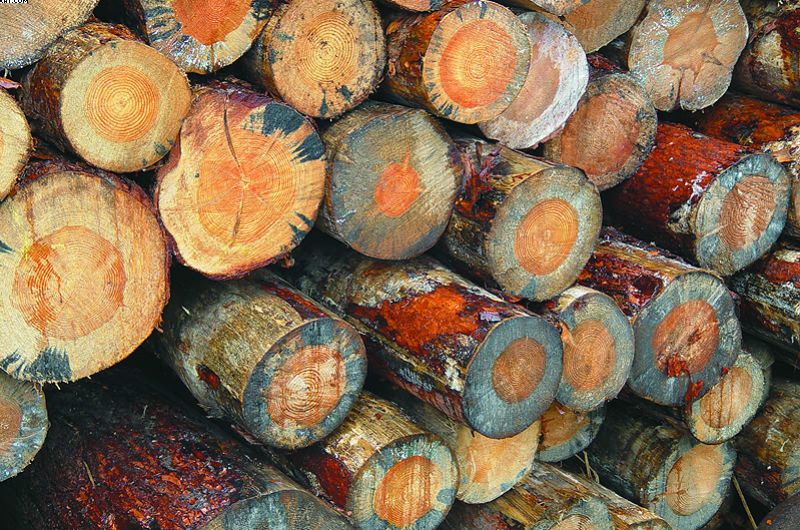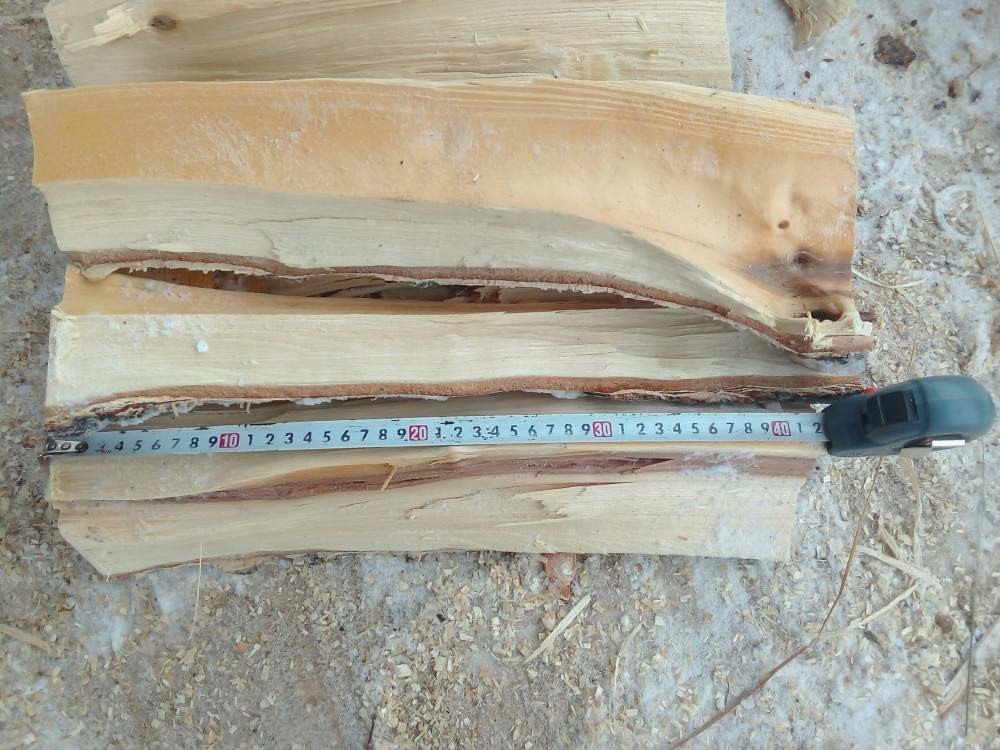What kind of firewood is better to heat a solid fuel boiler?
If you own solid fuel equipment that uses firewood as a fuel, one of the first questions is what kind of firewood is best for the boiler.
When choosing wood for a solid fuel boiler, the main criterion is the level of their heat transfer, which determines the energy efficiency. Therefore, the choice of fuel for the boiler requires knowledge of some data on wood species in order to select a specific type of fuel that meets the desired heat transfer and affordability.
How suitable are conifers for solid fuel boilers?
To answer this question, we need to focus on the specific characteristics of the most common types of wood.

First, they are divided into coniferous and deciduous.
Coniferous firewood:
- Pine;
- Spruce.
Firewood from coniferous wood species has a peculiarity - good combustion, but rapid combustion. When burning, pine needles emit a large volume of smoke and a significant amount of resin that settles on various parts of the equipment and inside the chimney.
The most commonly used hardwoods include:
- Acacia;
- Birch;
- Poplar;
- Oak;
- Alder.
Fruit trees, as well as maple and ash, are much less commonly used as fuel. Oak, birch, and acacia are the most popular due to their high heat output and excellent combustion.

To make the right choice of wood for heating, you need to take into account the price/quality indicators, and you need to be guided by the ratio of the volumetric calorific value of wood. Keeping in mind that solid fuels are measured in volumes, it is necessary to correlate the price of m3 with the amount of heat released during the combustion of a cubic meter of wood of a particular species.
Below is the heat transfer ratio of the most popular wood species in Ukraine:
- acacia/pine - 1.55;
- acacia / oak - 1.16;
- acacia/birch - 1.25;
- oak/birch - 1.08;
- oak/pine - 1.34;
- pine/birch - 0.81.
Characteristics to look for when choosing firewood:
- The duration of their burning;
- The level of heat transfer;
- Amount of emissions (smoke, tar);
- Complexity of preparation (drying, storage).
The first two indicators are particularly important. Hardwoods have the highest heat transfer and burning time. The most popular types of wood include:
- Yasen;
- White acacia;
- Oak;
- Beech;
- Maple;
- Grab.
Less popular are:
- Hazel;
- Pear.
Medium-hard wood is often used for heating. These are such as:
- Cherry;
- Birch;
- Cedar;
- Nut;
- Cherry;
- Alder.
Soft ones include:
- Aspen;
- Poplar;
- Spruce;
- Pine.
Features of rocks:
- Acacia and oak have a low natural moisture content and are perfect for heating immediately after cutting. Oak has the longest burning time, but the wood is difficult to ignite.
- Aspen and alder are excellent for heating due to the absence of volatile resins, so they burn without soot deposits on the chimney and greatly facilitate the operation of the equipment.
- Coniferous trees contain resins, which reduces the already short burning time of these species. Their presence also contributes to the appearance of a fairly large amount of soot in the chimney, which will further affect the quality of the boiler.
- Cherries are very difficult to ignite and produce a large volume of smoke.
- Birch has very good heat transfer and burning time. However, it should be borne in mind that this wood requires a large amount of oxygen for proper combustion. If there is not enough air, the tar contained in the birch will settle on the walls of the combustion chamber.
- Apple and pear trees are good options for heating a solid fuel boiler. They do not require as much oxygen, but their heat output is somewhat lower than that of birch.
- Poplar, like other softwoods, burns out very quickly, leaving almost no heat. It is possible to heat with these species, but it is worth considering the fuel consumption, which will be very significant.
- Aspen and alder burn out quickly, but burn cleanly, without soot on the chimney. This is a significant advantage when maintaining equipment.
Based on the above, the following conclusion can be drawn:
It is possible to use coniferous wood for solid fuel boilers, but it is highly undesirable. Since conifers emit resins during combustion, this contaminates the boiler, making it difficult to clean and operate. A large amount of soot is formed in the chimney. Conifers also burn out quickly, which increases fuel costs. In this case, the end does not justify the means!
Therefore, we do not recommend using coniferous firewood.
What kind of firewood is best for a boiler?
Oak and beech are the best firewood for a boiler, so it is not surprising that they are also the most expensive. Conifers will be the cheapest, but it is not recommended to heat the cauldron with them. Apple and pear are an inexpensive option, they are much cheaper than oak and have good heat transfer. The price of firewood from birch is more expensive than apple, but cheaper than pear.
Heat transfer characteristics of popular wood species
|
Breed |
Density kg/m3 |
Volumetric heat exchangerіcontent, kcal/dm3 |
|
Pine |
505 |
1990 |
|
Larch |
665 |
2620 |
|
Spruce |
445 |
1753 |
|
Fir |
375 |
1473 |
|
Cedar |
435 |
1714 |
|
White acacia |
800 |
3032 |
|
Pear |
710 |
2735 |
|
Hornbeam |
795 |
3062 |
|
Apple tree |
710 |
2735 |
|
Maple |
690 |
2653 |
|
Oak |
690 |
2653 |
|
Beech |
630 |
2620 |
|
Ash |
630 |
2620 |
|
Birch |
640 |
2465 |
|
Elm |
650 |
2504 |
|
Walnut tree |
590 |
2273 |
|
Aspen |
495 |
1907 |
|
Alder |
525 |
2022 |
|
Linden |
495 |
1907 |
|
Willow |
455 |
1753 |
|
Poplar |
455 |
1753 |
How much humidity affects combustion and what kind of wood to heat the boiler with
What should be the humidity of the derebinas for kotla?The recommended moisture content of wood species, which is prescribed by most manufacturers, is no more than 15-20%. These are firewoods of about two years of aging, stored under a canopy outside. If you measure the moisture content of a freshly cut tree, it fluctuates no more than 60%.

What does the moisture content of firewood for a boiler affect?
A large percentage of the heat released during combustion is used to evaporate moisture, which is why the calorific value of wet firewood is much lower than that of dry firewood.
If you ignore the issue of humidity, you may face the following problems:
- poor firewood ignition;
- the boiler is operating below its rated capacity;
- there is an increase in the accumulation of resins and plaque on the walls of the combustion chamber, heat exchanger and chimney;
- the pyrolysis boiler will not be able to operate in pyrolysis mode;
- due to the low calorific value, more frequent loading will be required.
Most often, freshly cut wood is on sale, so a careful owner of a solid fuel boiler should buy firewood, taking into account its stacking for 1-2 years. The table above shows the volumetric calorific value of different types of firewood at a nominal moisture content of 12%.
It is also worth considering that wood fuel comes in completely different sizes.

Since firewood sellers often offer several delivery options, you need to consider the size of your boiler: the dimensions of the door and the combustion chamber itself.
Proper operation of the boiler assumes that the firewood, when placed normally, is about 5 cm shorter than the depth of the combustion chamber itself.
The price of chopped and split firewood is 25-30% higher than that of meter-long firewood, and do not forget that usually in the equipment manual, boiler manufacturers indicate the optimal size of firewood and what kind of firewood is better to heat the house.
If you intend to harvest firewood on your own, it is advisable to have a chainsaw if you are talking about large volumes. The harvester will also need to be skilled in chopping. It should be noted that soft wood (poplar, pine, birch, spruce) is easier to handle than hard wood. However, oak, acacia, or ash have higher heat transfer. Therefore, the difficulties in harvesting them will pay off a hundredfold.